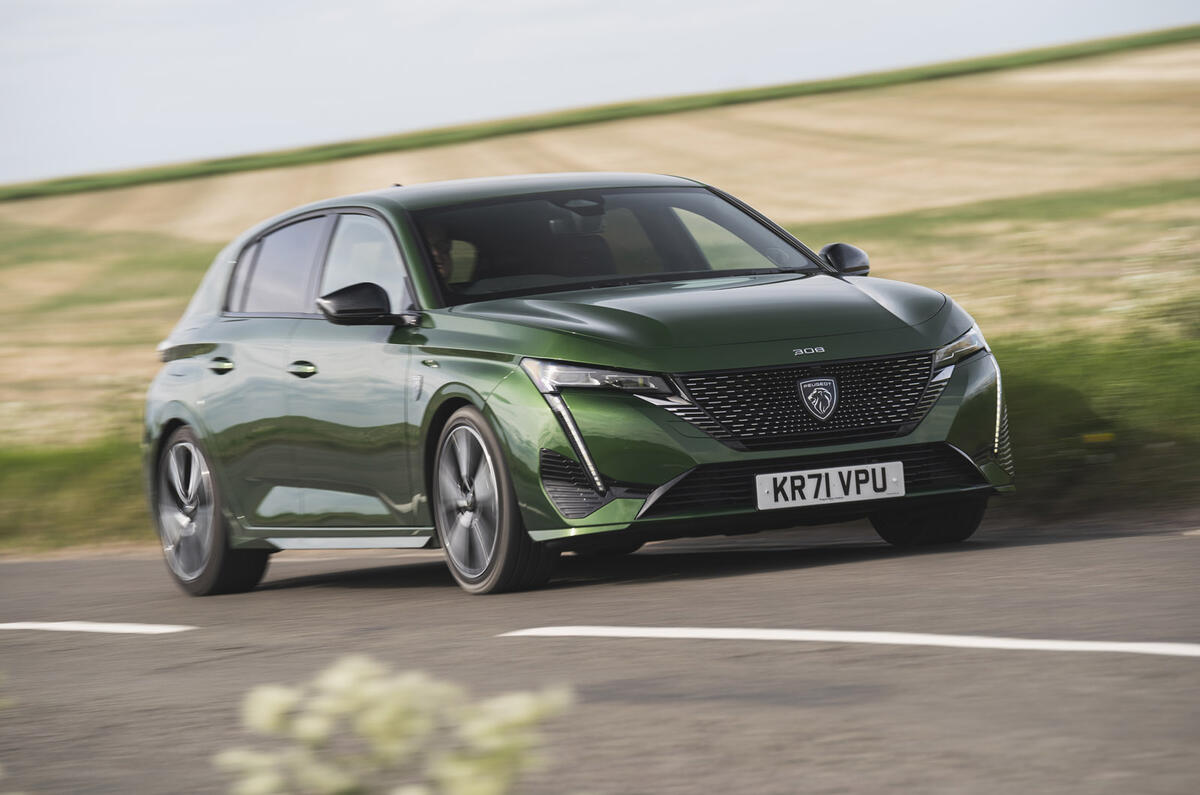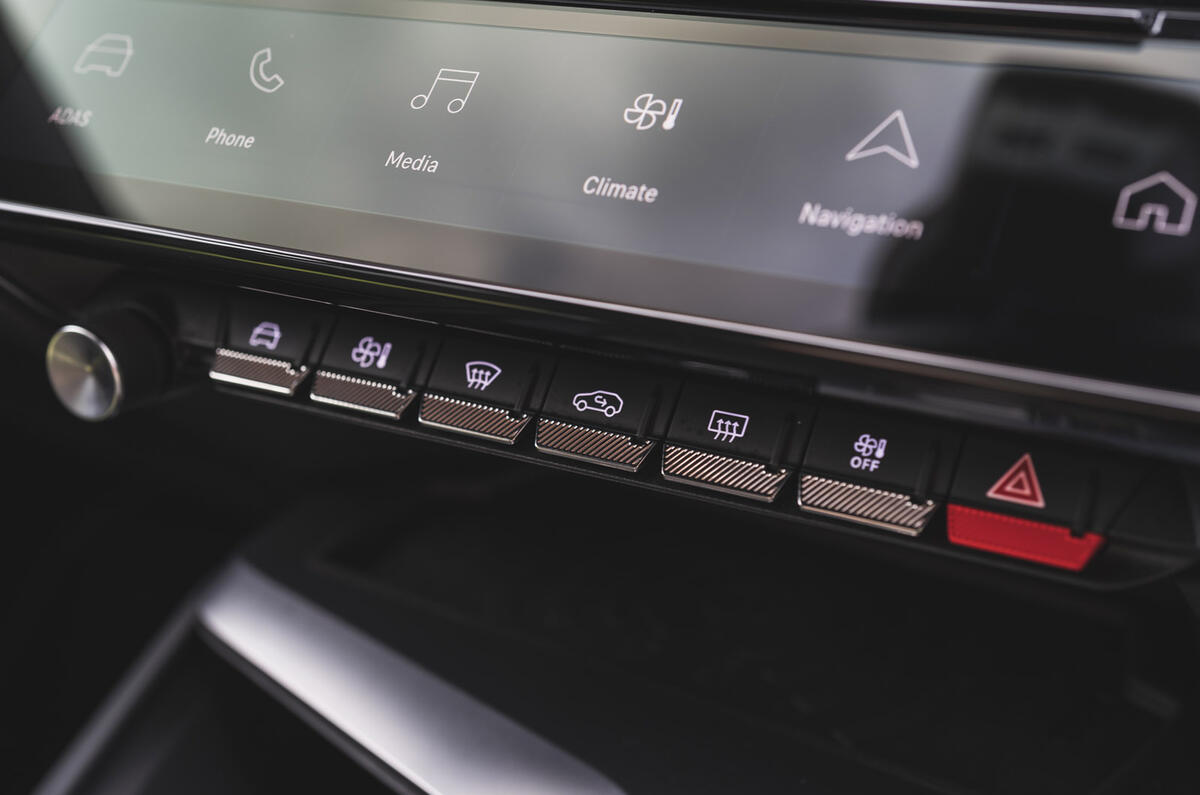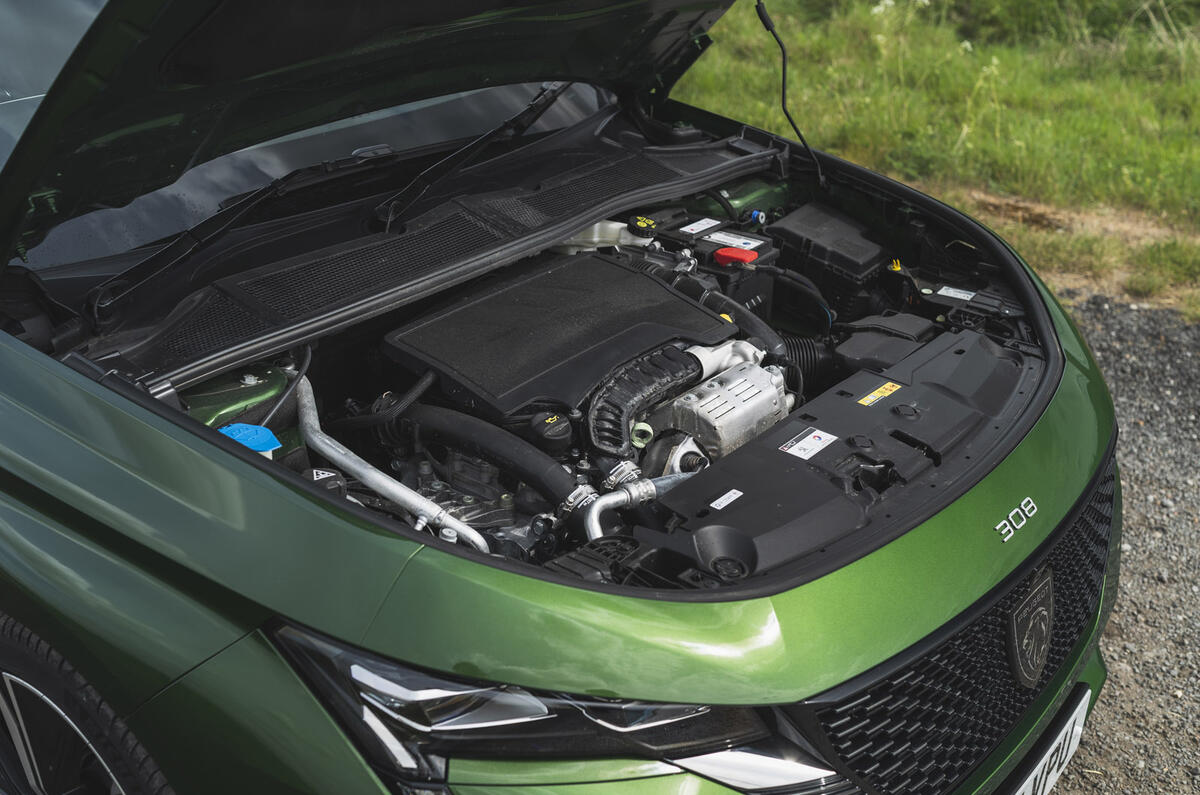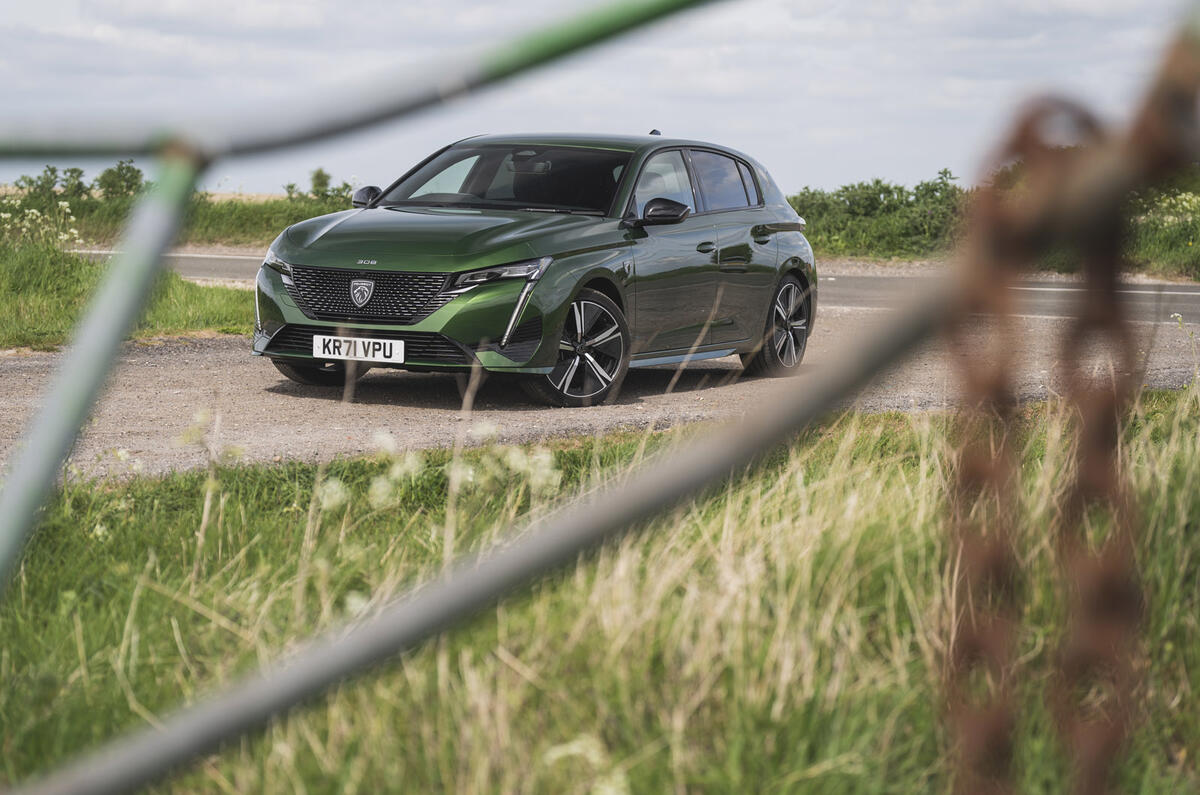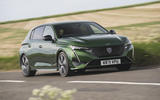Peugeot’s i-Cockpit control regime has been with us a decade this year, and is now present throughout the firm’s model range including this Peugeot 308. Consisting of a highish driving position, a lowish-set downsized steering wheel and a high-placed set of instruments, it was, and remains, Peugeot’s ‘us against the world’ attempt at redefining a normal control layout.
Much time-honoured convention has been sacrificed on this ergonomic altar over the years. When the last Peugeot 308 (2013-2021) came out in 2013, it did do so with speedometer and rev-counter clocks whose normal positions (revs on the left, speed on the right) had been switched around, and with the rev counter now graded in an anti-clockwise direction so as to be more readable in the new i-Cockpit era.That never really felt like intuitive thinking to us, but the orientation of instruments survives into the new 308, albeit on the car’s all-digital dashboard, which comes as standard.
Even after up to a decade of getting used to it, the balance of testers reported that they still found the 308’s layout unintuitive; that the car’s handling seemed to benefit little from being translated through a smaller-diameter steering wheel; and that they didn’t enjoy an unencumbered view of the instruments in any case.
Be that as it may, though, if Peugeot’s designers could have been talked out of their ergonomic coup, it would have surely happened by now. And elsewhere in the 308, notable gains have been made. The car’s cabin is now one of smart, boldly drawn geometric lines, moderately expensive-looking metallised trim finishes and appealing decorative textiles, and it represents a significant upgrade on perceived quality for a car once much more vulnerable to attack from above by the premium brands.



